«Gaudí said, “Sunshine is the best painter.” ». And the experience inside the Basilica truly shows he was right. Depending on the time of year, hour of the day and, even, the weather, the feeling inside changes due to the sunlight. But how did the architect manage to fill the Temple with colour?
Surpassing Gothic
By studying the Basilica compared to Gothic cathedrals, you can clearly see Gaudí’s intention of surpassing this style. On a structural level, the architect was able to eliminate exterior elements, such as buttresses and flying buttresses, which he believed were like crutches, by using his tree-like structure inside to help lighten the loads.
This same desire to update the style can be seen in his use of natural light, which streams into the Temple through its numerous windows. Very often, the most colourful part of a Gothic cathedral is the highest reaches of the stained-glass windows, where there is more direct, unobstructed sunlight outside. In the lower sections, however, where there may be shadows from trees or other buildings, the colour filter is less intense.
At the Sagrada Família, however, it is just the opposite. Gaudí put the most intensely coloured stained-glass windows, decorated with the names of saints and sanctuaries, in the lowest windows for the faithful to read. In the upper windows, however, he used no colouring or inscriptions at all, so the sun could illuminate the vaults decorated with mosaics and highlight their great height, reinforcing the feeling of verticality and the architect’s desire to bring the Temple closer to Heaven.
«At the Sagrada Família we only colour the lower parts and places the sun doesn’t hit directly. The upper parts will be coloured naturally, as sunshine is a great painter and in our region it paints with truly lovely colours.»
Gaudí i la Sagrada Família comentada per ell mateix: book of conversations between architect César Martinell and his teacher.
«There will be all sorts of stained-glass windows: the lower ones will be intensely coloured and the upper ones will be clear, so they can illuminate the mosaic vaults.»
El Temple de la Sagrada Família: : book published by Isidre Puig Boada, architect and disciple of Gaudí, in 1929, three years after the master’s death, to establish how the Basilica should be built.
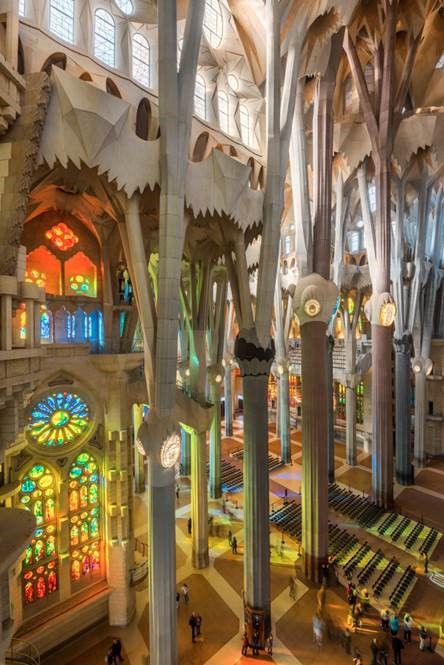
Photo of the inside of the Basilica showing the difference between the colourful lower stained-glass windows and the clear upper ones.
Cool and warm tones
Another important aspect Gaudí took into account in the natural lighting at the Basilica is the sun’s path over the course of the day as the earth rotates. For the stained-glass windows, he used cool and warm tones based on the position of the sun and the direction the Basilica faces to create an ever-changing light experience loaded with meaning.
The morning sun shines in from the east, which is the Nativity façade, where life begins. This is why the glass on this side is coloured with cool tones, blues, suitable for the dawn light. The sun sets in the west, which is the Passion façade: the end of the day and of life. So, the glass on this side is full of red and orange tones, like the evening light.
This is how, using light and colour, Gaudí explains the birth and death of Jesus, and creates an atmosphere that encourages contemplation and prayer.
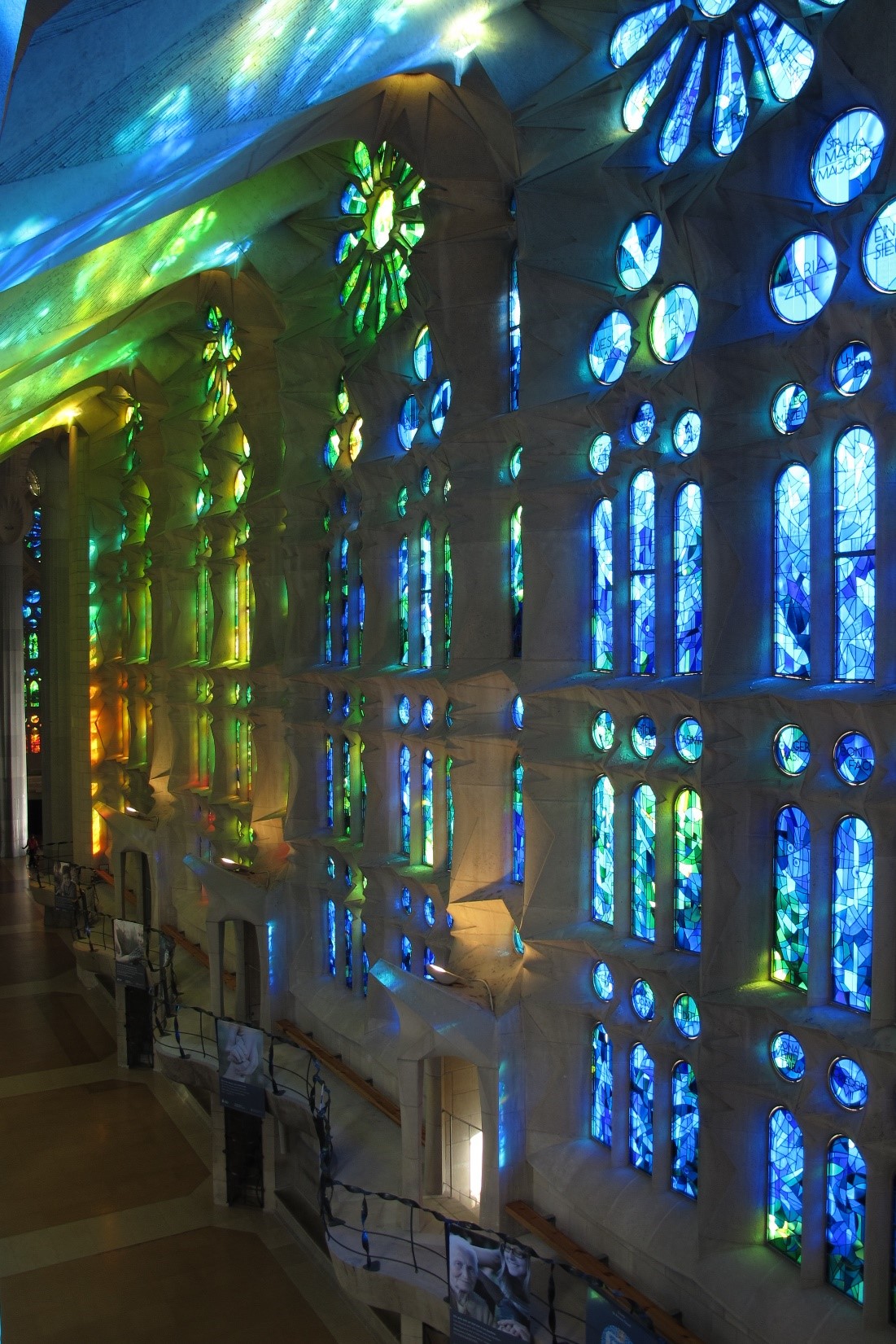

Near the solstices, a riot of colours
The stained-glass windows in the naves take into account not only the sun’s daily path, but also how the light changes with the passing seasons. The earth rotates on its inclined axis as it revolves around the sun, which means the days get longer and shorter depending on the season. This means that, in the northern hemisphere, there are more hours of light in summer, when the sun rises earlier in the east, and fewer in winter, because the sun sets earlier in the west.
The riot of colours inside the Basilica is at its most intense twice a year, thanks precisely to the sun’s path and the angle of the sun rays. In summer, as the sun rises earlier in the east, its rays hit the stained-glass windows on the Nativity side more directly in the morning, almost perpendicular. In the winter, however, the sun sets earlier in the west and its rays enter straight through the stained-glass windows on the Passion side. The drawing below helps explain it:

Drawing of how the sun’s daily path changes through the seasons compared to the Basilica’s facing
This phenomenon is particularly noticeable in the weeks around the solstices: 20-21 June in the summer and 21-22 December in winter. As the sunbeams are so horizontal and perpendicular to the stained-glass windows, at sunset and sunrise each of the rose windows projects its light onto the columns and section of the vault opposite. The effect is truly impressive.
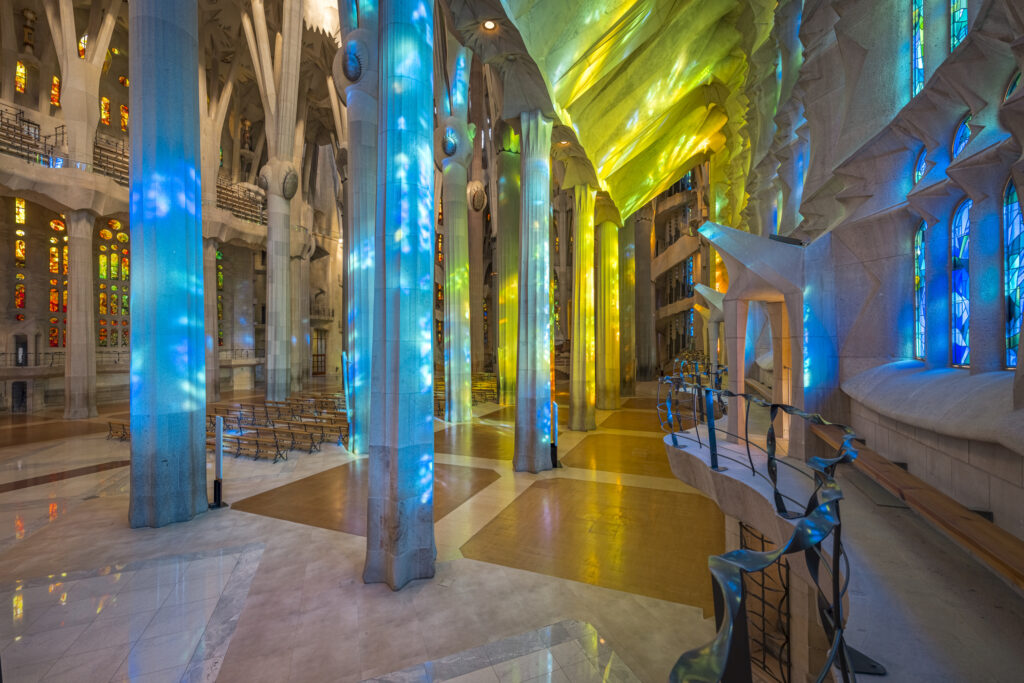
From trichromy to leaded glass
As Isidre Puig Boada explains in El temple de la Sagrada Família, Gaudí wanted clean, pure glass without any lines, enamel or paint that would dirty the windows and take away from the light’s nuances. We can find an example of this intention in his restoration of the Cathedral in Palma de Mallorca, which the architect used as a test bench for a truly innovative system: trichromy.
In 1999, artist Joan Vila-Grau began work on the stained-glass windows for the Basilica, which he worked on for over 20 years. Vila-Grau, who considered himself a painter first and foremost, used leaded glass, a different technique from the trichromy Gaudí had only begun to develop, which allowed him to create what the architect wanted while taking into account the ventilation, durability and complexity the project required.
The lead, however, doesn’t only help hold the glass in but is also an essential part of the composition, giving it rhythm and dynamism. This can be seen clearly in the clear windows on the upper levels, which have only transparent glass with different textures. This way, while in the lower windows the colour of the glass colours the light inside, in the upper windows it is the irregular thickness of the different textures that refracts the white light and breaks it down into the whole range of colours it contains.

Trichromy:a method that uses four superimposed pieces of glass, one in each of the three primary colours (yellow, cyan blue and magenta) and a fourth, white piece. Acid is used to adjust the intensity of the colour in each piece of glass to create the desired tone. For example, if we want green, the red is softened and the yellow and blue are left strong. The yellow is softened more if we want a darker green and the blue more if we want a lighter tone.
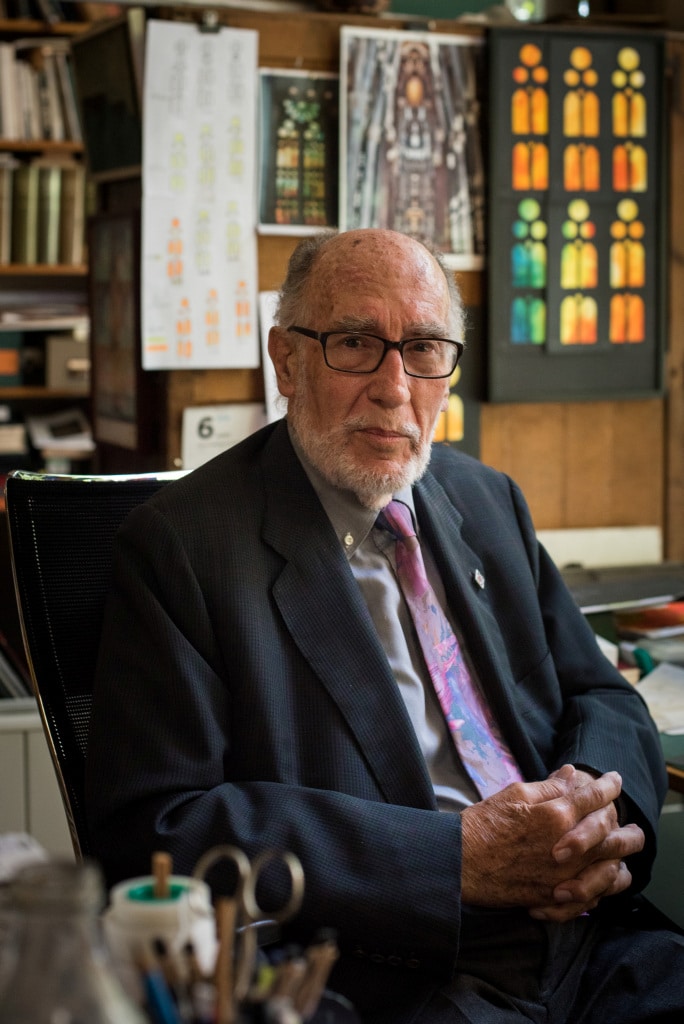
Joan Vila-Grau (Barcelona, 1932-2022): artist who devoted his professional life to painting, ceramics and stained-glass. Interested in the renewal of religious art, he specialised in the historical study of stained-glass windows in Catalonia and in creating contemporary windows.
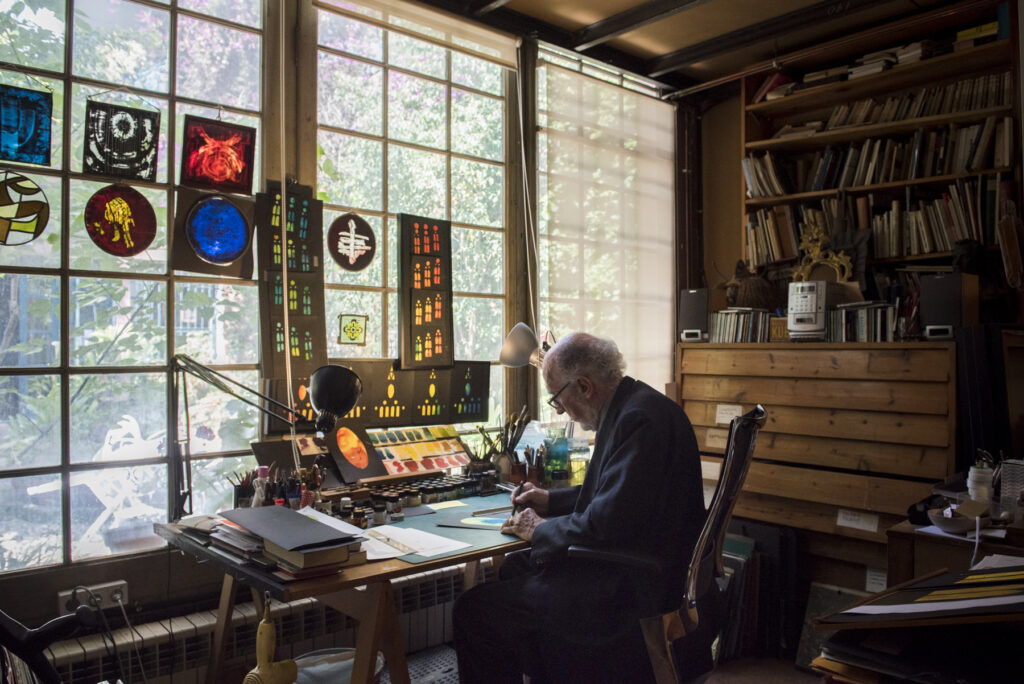
Leaded glass:a technique that fits together different coloured pieces of glass with an H-shaped lead structure that holds them together while allowing them to move, expand and contract, and last over time.


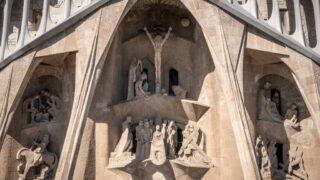
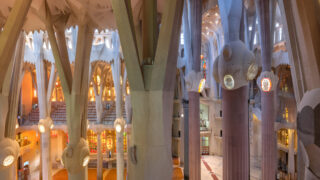
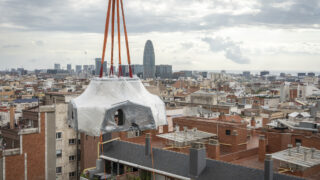
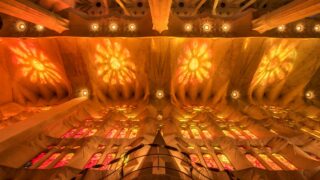
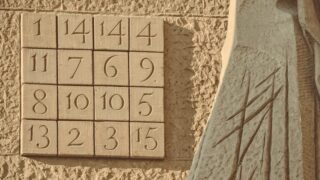
1 comment
Pilar Tolsa Ribera
Molt interessant gaudir d’un espectacle de llums gràcies a un gran geni. Quin orgull!